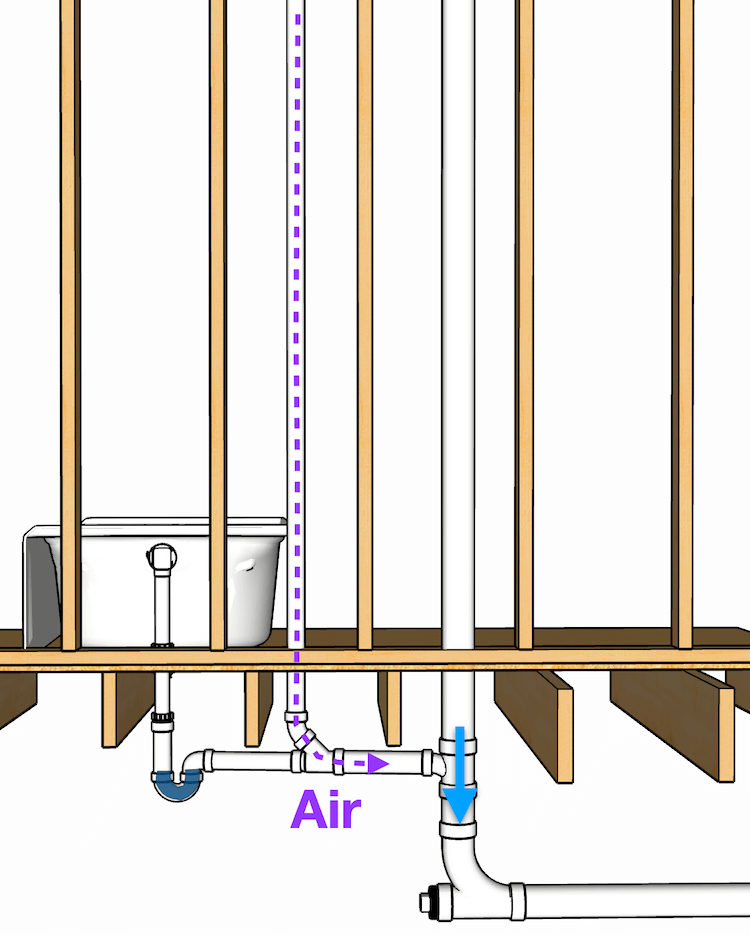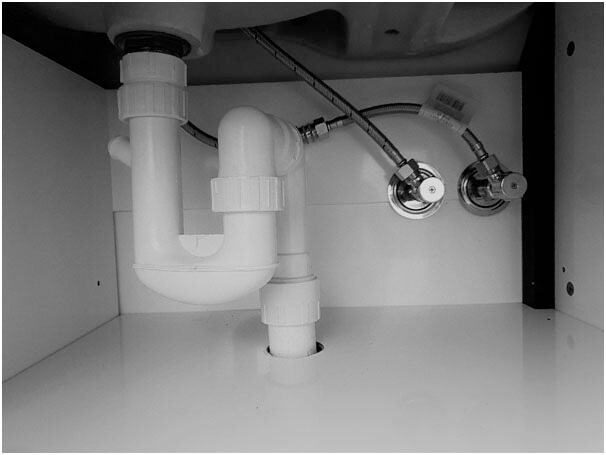Grasping The Necessity of Proper Ventilation in Plumbing Systems
Grasping The Necessity of Proper Ventilation in Plumbing Systems
Blog Article
We've unearthed this article relating to Essential Plumbing Vent Pipes: Understanding Their Role listed below on the web and believe it made good sense to write about it with you over here.

Appropriate air flow in plumbing systems is frequently forgotten, yet it is vital for keeping the capability and security of your home's plumbing. Air flow helps manage air pressure, protect against the accumulation of harmful gases, and make sure the reliable elimination of waste. In this guide, we will check out the value of correct pipes ventilation, how it functions, and the advantages it offers your pipes system.
Exactly How Ventilation Functions in Plumbing Equipments
Atmospheric Pressure Policy
Correct air flow maintains well balanced air pressure within the plumbing system. When water streams with pipelines, it displaces air. Without appropriate ventilation, this variation can create negative pressure, bring about reduce drains pipes or siphoning of water from traps, which can trigger undesirable smells to leak into the home.
Avoiding Sewage System Gas Build-up
One of the most crucial features of pipes vents is to prevent drain gases, such as methane and hydrogen sulfide, from collecting within the home. These gases can posture severe health and wellness dangers and are extremely combustible. Vent pipelines enable these gases to run away safely outdoors.
Assisting in Waste Removal
Air flow aids in the effective elimination of wastewater by preventing airlocks in the drainage system. When air can stream easily with the vents, it allows water and waste to move smoothly with the pipelines, lowering the threat of blockages and backups.
Benefits of Correct Ventilation
Enhanced System Performance
Effectively ventilated plumbing systems operate much more effectively, with fewer blockages, faster draining, and less strain on the pipes. This efficiency expands the life-span of the pipes system.
Improved Air Quality
By avoiding drain gases from entering your home, appropriate air flow adds to far better indoor air top quality, making your living setting healthier and a lot more comfortable.
Protecting Against Water Damages
Sufficient air flow helps prevent water from being siphoned out of catches, which can bring about sewage system gases getting in the home and triggering water damage over time.
Actions to Make Certain Proper Air Flow
Consulting Plumbing Codes
Always consult neighborhood pipes codes when making or modifying your pipes system. These codes offer the necessary standards for proper airing vent and guarantee your system satisfies safety and security requirements.
Regular Examination and Maintenance
Regular examinations can aid recognize possible air flow concerns prior to they end up being major problems. Maintenance jobs, such as cleansing air vent pipelines and checking for obstructions, are crucial for keeping the system in good working order.
Professional Installation
For new setups or significant alterations, it's important to work with a professional plumbing professional. They have the competence to make sure the air flow system is properly created and set up according to code.
Recognizing Ventilation in Plumbing
Air flow in pipes describes the network of pipes that permit air to flow through the drain system. These vents offer multiple functions, including regulating air pressure within the pipes, stopping drain gases from going into the home, and aiding in the smooth flow of wastewater.
Types of Pipes Vents
Key Stack Vent
The primary stack vent, additionally called the air vent stack, is the primary air vent in a pipes system. It extends from the major drainpipe align with the roofing system, permitting gases to get away and fresh air to enter the system.
Branch Vent
Branch vents link to the main pile air vent and serve private components, such as sinks, toilets, and showers. These vents make certain that each fixture has ample air flow to function effectively.
Air Admittance Shutoff (AAV).
An Air Admittance Shutoff (AAV) is a one-way shutoff that allows air to go into the plumbing system without the need for a traditional vent pipeline extending through the roofing system. AAVs are typically made use of in renovations or areas where mounting a typical air vent is impractical.
Indicators of Poor Ventilation in Pipes.
Slow Draining Fixtures.
If your sinks, tubs, or bathrooms are draining gradually, maybe an indicator of poor air flow. Inadequate air circulation can produce a vacuum result, making it tough for water to drain properly.
Gurgling Seems.
Gurgling sounds originating from drains are frequently an outcome of air being sucked with water traps due to negative stress in the pipes. This is a clear indication of insufficient ventilation.
Undesirable Smells.
Sewer odors inside your home are a warning that your pipes system is not appropriately aerated. This can mean that drain gases are not being adequately aired vent outside, leading to possibly harmful conditions.
Usual Air Flow Errors.
Poor Vent Sizing.
Making use of small air vent pipes can bring about inadequate air flow and stress discrepancies in the system. It's essential to make use of vents that fulfill the details needs of your pipes system.
Improper Vent Positioning.
Placing vents also much from the fixtures they offer can decrease their efficiency. Proper positioning makes sure that air can stream freely and effectively through the system.
Disregarding Code Demands.
Building regulations offer details guidelines for plumbing air flow. Ignoring these codes can result in a system that fails to function properly and might bring about expensive repair services or carcinogen.
Final thought.
Correct ventilation is a vital part of any pipes system, making sure that it operates efficiently and securely. By understanding the relevance of ventilation, acknowledging the indicators of inadequate air flow, and taking actions to preserve your system, you can avoid expensive problems and protect your home's air quality.
4 Things You Should Know About Your Plumbing Vents
What Plumbing Vents Are
Also called a vent stack, a plumbing vent is a vertical pipe attached to your drain line that runs through your roof. The plumbing vent pipe, or plumbing air vent, removes gas and odors from your plumbing system and allows fresh air to enter the pipes, helping the water to flow out of the drain pipes.
What Plumbing Vents Do
Plumbing vents have two basic functions. One of which is to allow unpleasant smelling wastewater and sewer gasses to escape your plumbing system instead of entering your home. Plumbing vent pipes are typically located on roofs, away from windows, to ensure the fumes exit the home completely.
The other function of the plumbing vent is to move fresh air into your plumbing system. This helps move water through every plumbing fixture in your house, like toilets and sink drains. Think of the way in which you need to let a little air into the bottle as you pour soda in order to make the drink flow smoothly.
Different Types of Plumbing Vents
True vent: This is the most common vent option. In simplest terms, a true vent is a vertical pipe attached to your drain line that exits through the roof. They often function as the main vent that other fixtures can connect to. Re-vent pipe or auxiliary vent: Attached to the drain line near specific plumbing fixtures, re-vent pipes run up and over to connect to the main vent. Common vent: Two plumbing fixtures installed on opposite sides of a wall are typically tied into the vent stack using something known as a sanitary cross. Wet vent: This venting option operates as a drain pipe and a vent at the same time. Wet vent drainage systems drain water from one fixture while venting the air from another. Although they’ve been used for over 100 years, wet vent systems have only recently been added to the plumbing code in many areas. If you’re planning on installing one in a bathroom remodel, make sure you check your local code prior to construction. Loop vent: For free-standing fixtures like kitchen island sinks, loop vents are ideal. These vent pipes run under the floor, rise from the P-trap, and create a loop inside the cabinet sink. Air admittance valve: An AAV is a one-way mechanical valve typically installed at the site of the plumbing fixture. AAVs allow venting to occur without having to tie into a larger venting system. They’re ideal for venting fixtures where you aren’t able to easily connect to an existing vent system. Common Plumbing Vent Issues
Although vent pipes typically don’t have water flowing through them, they’re still subject to many typical plumbing issues. For example, clogs are one of the most common problems associated with sewer vent pipes. If your vent pipe gets clogged, all of your plumbing fixtures tied into the vent stack will be affected.
A sink with a slow drain that bubbles and gurgles or a strong sewage smell around your toilet are both indicators that your toilet vent pipe is clogged. Because most vent pipes exit through the roof, old leaves, twigs or even a bird’s nest could be clogging the pipe.
Clogs in your vent pipe system cause a buildup of negative pressure, meaning that water won’t be able to flow out of your home very well. It’s similar to putting your finger over the opening of a straw to trap water inside. When you remove your finger, the water is able to flow out of the straw.
If you suspect you have any blockage in your vent, make sure you have a professional come examine the situation. Left unchecked, a blocked air vent can lead to other costly repairs, like leaks and sediment buildup.
Under Pressure
Pipe vents are essential aspects of a home’s plumbing system. Owning a home means learning about all sorts of things you never put much thought into before. But by understanding as much as you can about the important systems of your home, you can keep those budgets intact and those anxiety levels low.
https://www.homeserve.com/en-us/blog/home-improvement/plumbing-vents/

We hope you liked our article on Essential Plumbing Vent Pipes: Understanding Their Role. Many thanks for taking a few minutes to read through our piece of content. Sharing is caring. You never know, you might be doing someone a favor. I value reading our article about What Is a Plumbing Vent and Why Is It Important.
This Resource Report this page